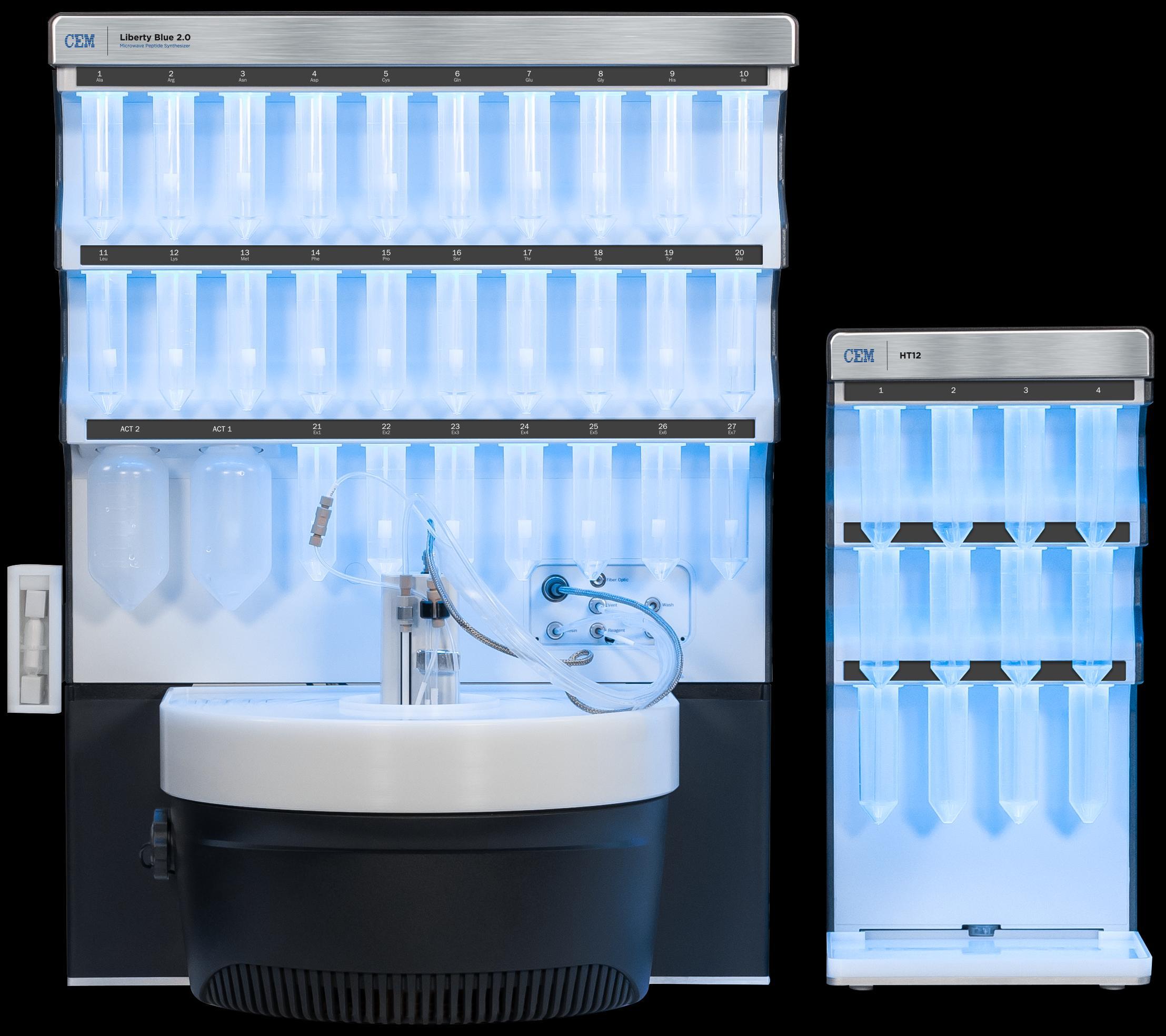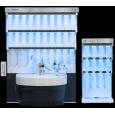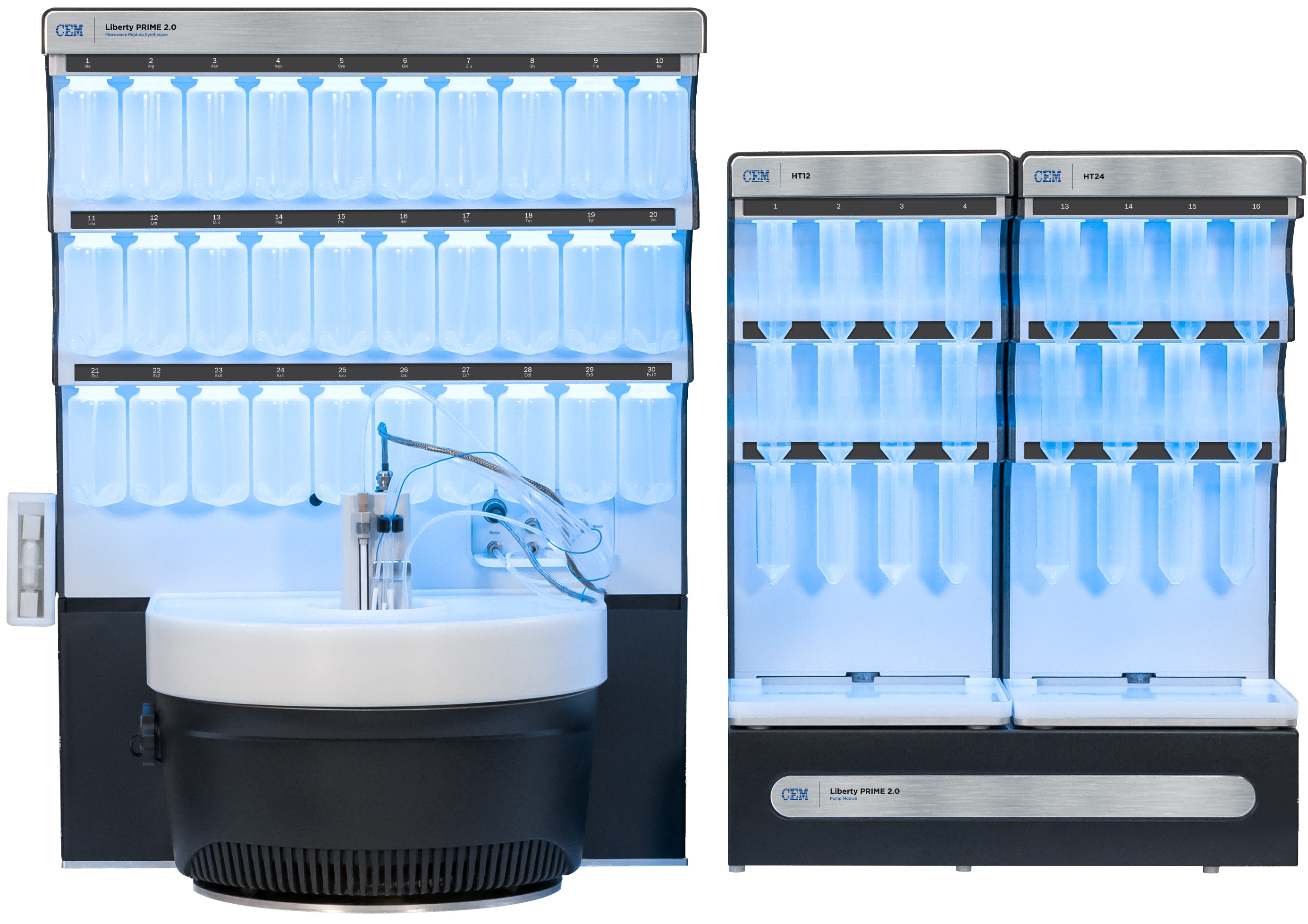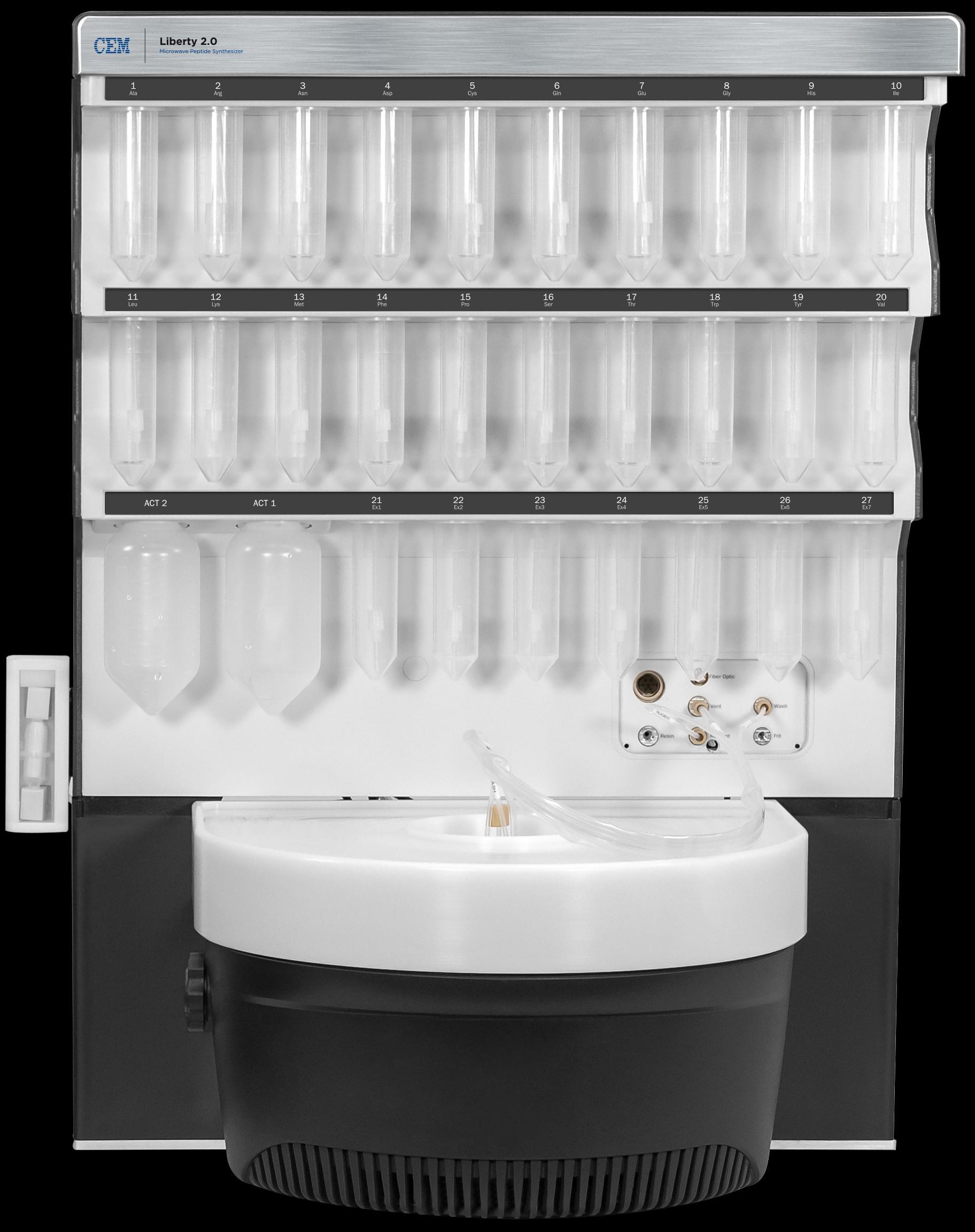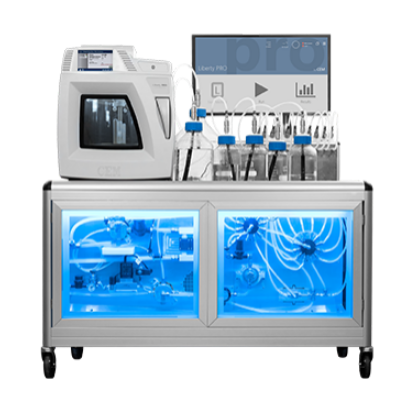摘要
这项研究是基于美国CEM公司多肽合成仪“LIBERTY”的微波技术能够协助固相肽合成(SPPS) 完成传统方法不可能实现的困难合成实验. 微波技术成功合成难以合成的PrP (90-144), PrP( 106-126) 和 长肽链PrP (1-111); 而且其产量和纯度相当高。
方案详情

Investigation of the Structure of the N-terminal Region of Prion Protein (PrP) viathe Microwave Synthesis of Peptide Fragments up to 111 Amino Acids in LengthJohn A. Karas1, Martin Boland1,2, Vanessa Wall1,2, Steven Collins?, Kevin Barnham1,2 and Denis Scanlon11. Bio21 Institute, University of Melbourne, Victoria 3010, Australia. 2. Department of Pathology, University of Melbourne, Victoria 3010, Australia. institute 1.Introduction Prions -the infectious agent ·Does not exhibit virally induced immunological response ·Resistant to heat, UV and nuclease treatment, postulated to be devoid of nuclear material·1982: Isolation of protease resistant protein by Bolton(1). ·1982: Prusiner(2) coins“Prion” the term (Proteinaceous infectious particle) ·1985: Identification of Prnp gene found to encodes for normal PrPC(C=cellular)(3) ·Pathogenic PrPSc(Sc=Scrapie) is an abnormal conformational isoform that show nodifferences in amino acids sequence (post-translationally derived conformer of PrPC) Cellular prion protein:PrPC 2. Aim To use microwave peptide synthesis technology to prepare N-terminal peptide fragmentsfrom the PrPC protein in order to gain structural insights which may shed light on thetransformation on the PrPC protein into the pathogenic PrPSc form of the protein 231 ·Fmoc SPPS performed on CEM LibertyEOmicrowave synthesiser50 pmol scale, Reagent excess=10 equiv·Cleavage:TFA/H2O/TIPS /DODT(92.5/2.5/2.5/2.5), 3 hours ·Purification: Vydac C4 and C18 prep- columns,0.1% TFA buffersMS: Agilent QTOF LC/MS instrument·Yields ranged from~1% (PrP(1-111)) to ~25%(PrP(23-50)) ·Synthesis of PrP (106-126) has been reported to be problematic by conventional Fmoc SPPS (4)·Novabiochem have reported the synthesis with the use of Dmb-dipeptides (5) ·Microwave assisted Fmoc SPPS on the CEM Liberty Synthesiser proceeds smoothly in highyield (~12%) 126).The synthesis of PrP (90-144) proceeded smoothly in good yield(~5%) ·To test the capability of the Liberty synthesiser, longer fragments such as PrP (23-111)andPrP (1-111) were assembled -successfully. The data for PrP (1-111) is shown(yield~1%) 7a Aggregation properties ofPrP peptides 7b Toxicity on SH-SY5Y humanneuroblastoma cell lines ·Amyloid formation by PrP fragmentsPrP(90-144)(), PrP(111-144)(◆),andPrP(112-144)(A), as monitored by ThTfluorescence. ·Cells were plated for 24hrs on 96 well platesat a density of 3 x 104 cells per well.·Each peptide (100 pM) incubated with cellsfor 72 h. Cell viability was measured by MTS assay. 8.Conclusions ·Peptide fragments from the N-terminal 144 amino acids of Prion Protein have been synthesizedon the CEM Liberty peptide synthesiser in high yield and purity ·Microwave assisted Fmoc SPPS has enabled the synthesis of difficult peptide fragments suchas PrP (90-144)and PrP (106-126) and long peptide fragments such as PrP (1-111) ·The peptide fragments exhibit a range of biological functions which provides importantinsights into the transformation of PrPC into the pathogenic PrpSc form of the protein References ( 1. Bolton, D . C. e t al. (1982) Identification of a protein that purifies wit h th e scrapie prion. Science 218(4579), 1309-1311. 2. Prusiner, S.B. (1982) Novel proteinaceous pa r ticles cause scrapie. Science 216(4542), 136- 1 44 ) 3. Chesebro, B. et al.(1985) Identification of scrapie prion protein-specific mRNA in scrapie-infected and uninfected brain. Nature 315331-333. 4. Jobling, M.F. (1999) The synthesis and spectroscopic analysis of the neurotoxic prion peptide 106-126: comparitive use of manualBoc and Fmoc chemistry. Lett. Pep Sci. 6,129-134. 5. White,P. (2006) Synthesis of neurotoxic prion peptide (106-126) Novabiochem innovations 3/06 Acknowledgements We thank Han Sen from the School of Biochemistry, University of Melbourne for the schematic of PrPC structure and Paul O'Donnelfrom the RTF, Bio21 Institute, University of Melbourne for invaluable help with the peptide mass spectral analysis.
确定
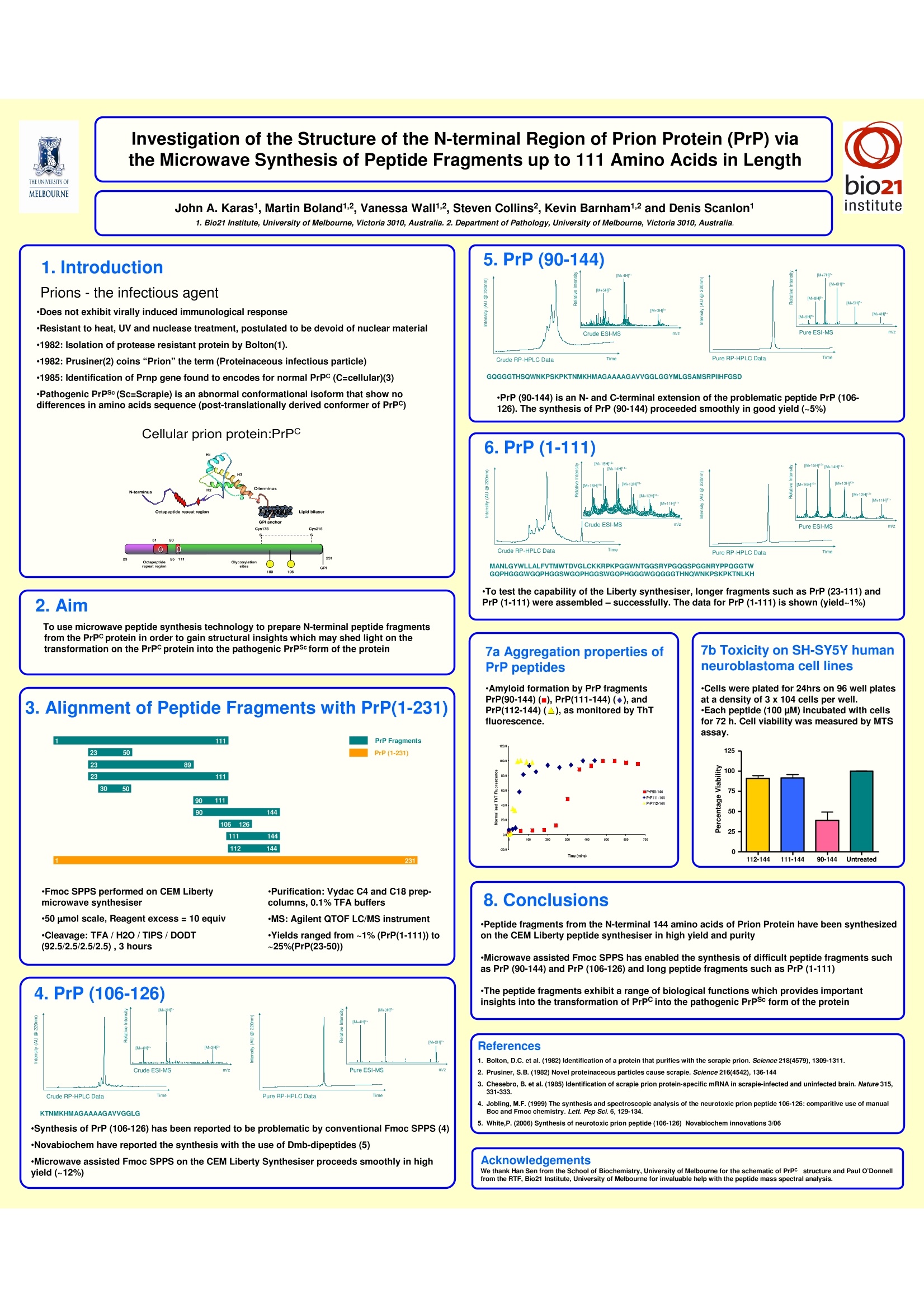
还剩1页未读,是否继续阅读?
培安有限公司为您提供《培安公司:利用微波技术合成多肽(PrP), 其肽链长达111个氨基酸》,该方案主要用于其他中微波技术合成方法检测,参考标准--,《培安公司:利用微波技术合成多肽(PrP), 其肽链长达111个氨基酸》用到的仪器有CEM LibertyBlue 2.0 全自动微波多肽合成仪
推荐专场
相关方案
更多
该厂商其他方案
更多

